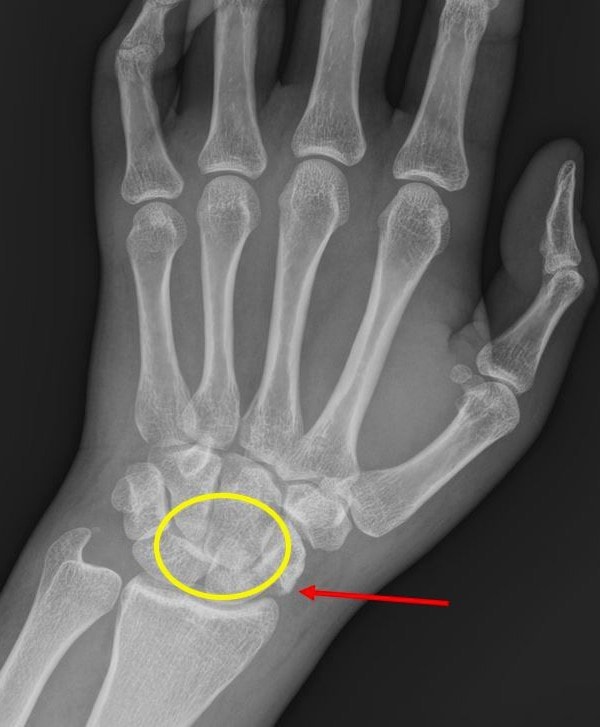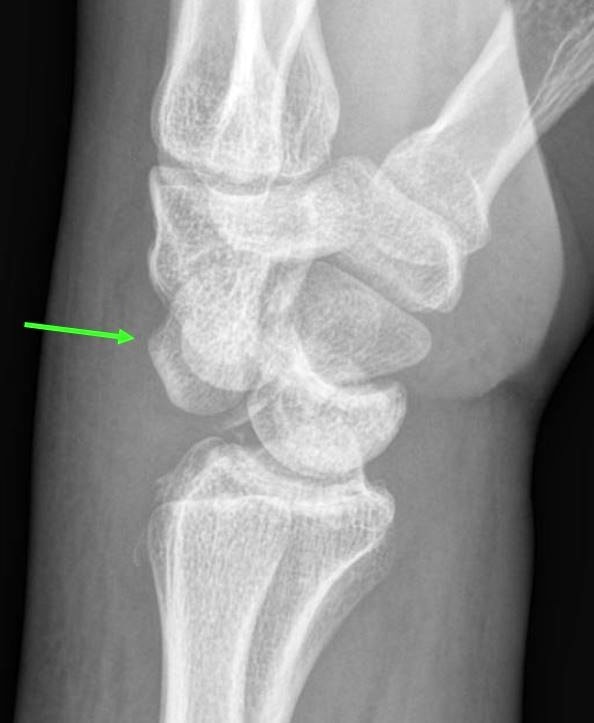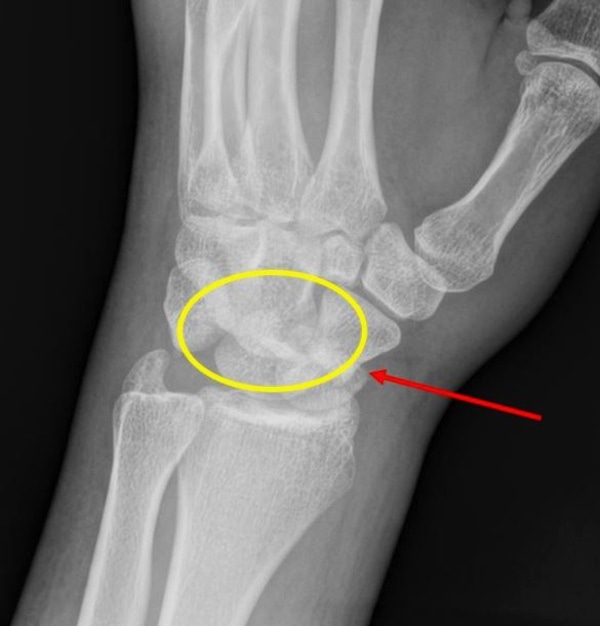Published on
Differential Diagnosis
- Carpal fracture
- Lunate dislocation
- Trans-scaphoid perilunate dislocation
- Wrist sprain
Diagnosis
This patient was diagnosed with a trans-scaphoid perilunate dislocation. The AP and oblique views reveal fragmentation of the scaphoid (red arrows) and overlap of the proximal and distal carpal rows (yellow circle) and rotation of the lunate. The lateral view shows dorsal dislocation of the distal carpal row (green arrow). The proximal scaphoid fragment and lunate are normally located in the radiocarpal joint.
Learnings/What to Look for
- Perilunate dislocations occur most often in young adults and involve high-energy trauma resulting in the loading of a hyperextended, ulnar deviated hand
- Perilunate dislocation involves traumatic rupture of the radioscaphocapitate, scapholunate interosseous, and lunotriquetral interosseous ligaments
- Around 60% of perilunate dislocations are associated with a scaphoid fracture which is then termed a trans-scaphoid perilunate dislocation
Pearls for Urgent Care Management
- Reduction should be achieved as soon as possible to reduce risk of complications (including avascular necrosis, median nerve injury, arterial compromise, or compartment syndrome)
- Referral to a hand surgeon is indicated for consideration of closed reduction and casting or open reduction and internal fixation
Acknowledgment: Images and case presented by Experity Teleradiology (www.experityhealth.com/teleradiology).
A 23-Year-Old with Wrist Pain After a Mountain Bike Mishap
1 2



